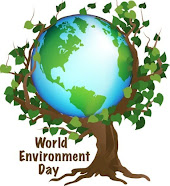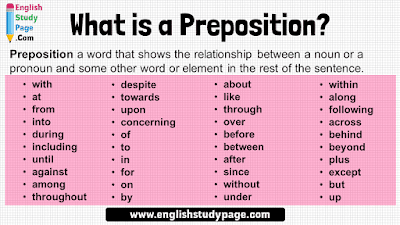Venezuelans Great Devotion to the Divine Shepherdess
Origins of the Marian invocation of the Divine Pastora
Location of the image of the Divine Shepherdess
History of the great devotion of Venezuelans to the Divine Shepherdess
14 day of the virgin of the divine shepherd
National Teacher Day – May 4, 2021
National Teacher Day is observed on the first Tuesday of the first full week of May (May 4) and we’re more than ready to show our appreciation to those who have taught us. Everyone has had that favorite teacher that has helped inspire them. This day meant to honor them was actually made by a teacher. None other than First Lady Eleanor Roosevelt herself. Eleanor Roosevelt was more than Franklin D. Roosevelt’s wife, she has a history of civic duty and was an advocate for fellow teachers. Her love for education began at a young age when she was privately tutored and encouraged by her aunt Anna “Barnie” Roosevelt. No matter how high she rose on the social ladder, she never forgot where she came from.
History of National Teacher Day
In 1953, Eleanor Roosevelt stood up to Congress in hopes of convincing them that teachers needed a day to be recognized for all that they do. Until that point, the celebration of the day wasn’t clear. It’s believed that some schools in certain states were already observing the day, but there wasn’t a clear consensus and she wanted to make it official.
The National Education Association (NEA) in partnership with the Kansas State and Indiana State Boards of Education, lobbied Congress in order for the day to be recognized. Despite her best efforts, the first National Teacher Day didn’t become an official national day until 1980.
Traditions of the Day
A teacher is not just limited to the classroom. It can be anyone who you look up to or has taught you lessons in life — a friend, a family member, or a mentor (just like Mr. Miyagi in “The Karate Kid”). The day is all about thanking teachers for imparting knowledge and wisdom, and inspiring us to be better versions of ourselves.
Cards and gifts are sent to teachers as expressions of gratitude. Teachers get plenty of mugs throughout the year, so gift cards are a great alternative. Teachers themselves celebrate the day by having get-togethers or mini parties in the staff room.
World Environmental Health Day: 26 September
World Environmental Health Day is observed globally on 26th September every year. This day is celebrated to shed the light on important work of environmental health around the world. The Theme for the 2020 World Environmental Health Day: Environmental health, a key public health intervention in disease pandemic prevention.
26 September has been declared "World Environmental Health Day" by the International Federation of Environmental Health to be celebrated each year.
Theme for the 2015 World Environmental Health Day: Children are our future , Let’s protect their Environment and Health
Children’s Health & Safety and the Protection of their Environment is a highly important topic to all people in the World. The IFEH wants to highlight this and to focus on how to reduce exposure from the surrounding environment by announcing this theme for World Environmental Health Day 2015.
Children are one of the most vulnerable sections of our society. In comparison with adults they have less resistance to infection, poor diet & nutrition, chemical contaminants, air pollution from traffic as well as air pollution in general, and they are at higher risks in terms of injury from accidents at home and in regard to traffic accidents.
The event established the principles of environmental education within the framework of United Nations programmes. The outcome of the event was the publishing of the Belgrade Charter, which embodies the fundamental demands of environmental education, the goals of which are as follows: To develop a world population that is aware of, and concerned about, the environment and its associated problems, and which has the knowledge, skills, attitudes, motivations and commitment to work individually and collectively towards solutions of current problems and the prevention of new ones.
World Cancer Day is an international day marked on February 4 to raise awareness of cancer and to encourage its prevention, detection, and treatment. World Cancer Day is led by the Union for International Cancer Control (UICC) to support the goals of the World Cancer Declaration, written in 2008. The primary goal of World Cancer Day is to significantly reduce illness and death caused by cancer and is an opportunity to rally the international community to end the injustice of preventable suffering from cancer. The day is observed by the United Nations.
The Charter of Paris Against Cancer,which was created to promote research, prevent cancer, improve patient services, also included an article establishing the anniversary of the document's official signing as World Cancer Day, was signed at the Summit by the then General Director of UNESCO, Kōichirō Matsuura, and then French President Jacques Chirac in Paris on 4 February 2000.
The 2019-2021 campaign theme is 'I Am and I Will'. The theme seeks to counter the negative attitude and fatalistic belief that nothing can be done about cancer, and instead promotes how our personal actions can be powerful and impactful.
In 2016, World Cancer Day started a three-year campaign under the tagline of 'We can. I can.', which explored the power of collective and individual actions to reduce the impact of cancer.Prior to 2016, the campaign themes included "Not Beyond Us" (2015) and "Debunk the Myths" (2014).
World water Day: 22
World Water Day is an international observance day. The intention is to inspire people around the world to learn more about water-related issues and to take action to make a difference. In 2020, due to the COVID-19 pandemic, there was an additional focus on hand washing and hygiene.
Relevant issues include water scarcity, water pollution, inadequate water supply, lack of sanitation, and the impacts of climate change (which is the theme of World Water Day 2020). The day brings to light the inequality of access to WASH services and the need to assure the human right to water and sanitation.
History
In 1993, the first World Water Day was observed. An archive of previous World Water Day campaign websites also exists.
okey i take this section of the page to talk about why i did the "infography" in this way
1- is too hard make an infography in this kind of page, why? just an example like writting in a side of a image or putting arrows or making pretty much anything, i think an infography is a lot more easier in word or other format but this is pretty much impossible without help
2- if you teacher (Araceli Torres) explain me how to do it step by step, sure! i take my time a il do it with no problem, but for the moment is going to stay like this
student: Ronny Alejandro Sulbaran Hernandez
section: 4to "C" #30
Teacher: Aracelis Torres
collegue: Arzobispo Silva


















